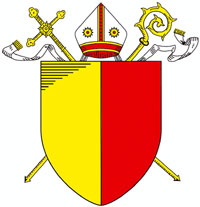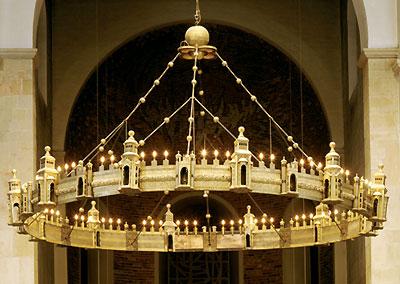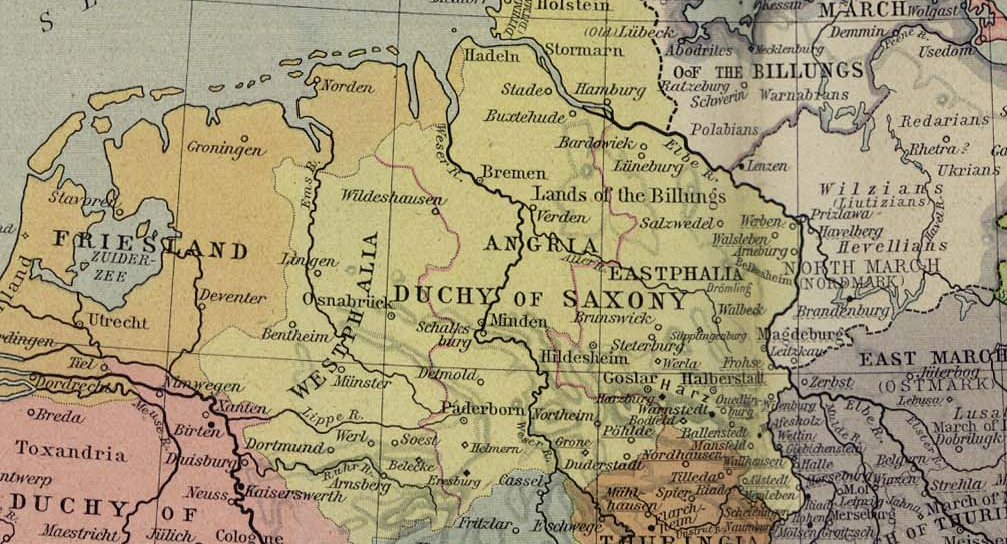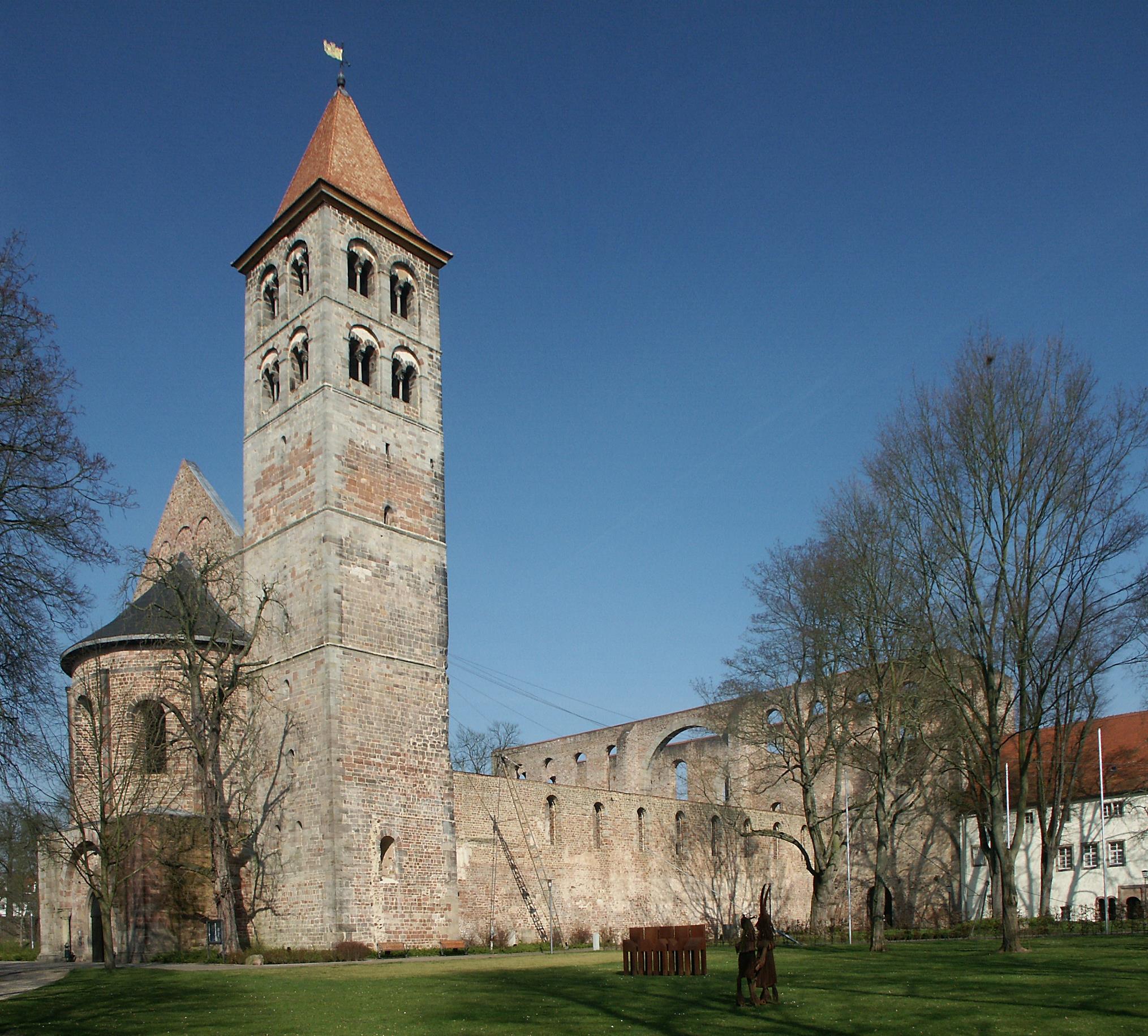|
Hezilo Of Hildesheim
Hezilo of Hildesheim,Thompson, James Westfall (1928). ''Feudal Germany'', University of Chicago Press, Chicago, Cambridge University Press, London, p. 206. also known as Hezelo, Hettilo or Ethilo (betw. 1020 and 1025–1079), was Bishop of Hildesheim from 1054 to 1079. Life Hezilo probably came from a Frankish family and is likely to have received his theology training in Bamberg. Under Emperor Henry III, he was a member of the court chaplaincy (''Hofkapelle'') in 1051/52, initially as the provost of St. Simon and Jude in Goslar and then in 1053 as Chancellor of Italy. In 1054, he became the successor to Azelin as Bishop of Hildesheim. Hezilo was concerned to maintain the position of Hildesheim in and around Goslar, the heart of the Salian royal estate, where he and other leading members of the episcopate (including Adalbert of Bremen and Anno of Cologne) could exploit the situation whilst Henry IV was still a minor. In Goslar, he founded the Church of St. James the Elder ... [...More Info...] [...Related Items...] OR: [Wikipedia] [Google] [Baidu] |
Bishop Of Hildesheim
This list records the incumbents of the Roman Catholic Diocese of Hildesheim (german: link=no, Bistum Hildesheim). Between 1235 and 1803 the bishops simultaneously officiating as rulers of princely rank (prince-bishop) in the Prince-Bishopric of Hildesheim (german: link=no, Hochstift Hildesheim), a state of imperial immediacy within the Holy Roman Empire. Hildesheim is the seat of the bishops and the cathedral chapter. Titles of the incumbents of the Hildesheim See Between 1235 and 1803 the elected and papally confirmed bishops of the Hildesheim See were additionally imperially invested princely power as prince-bishops. In 1235 part of the Hildesheim diocesan territory, the episcopal and capitular temporalities (Stift) were disentangled from the Duchy of Brunswick and Lunenburg and became an own territory of imperial immediacy called Prince-Bishopric of Brunswick and Lunenburg (german: link=no, Hochstift Hildesheim), a vassal of the Holy Roman Empire. The prince-bishopric wa ... [...More Info...] [...Related Items...] OR: [Wikipedia] [Google] [Baidu] |
Goslar Precedence Dispute
The Goslar Precedence Dispute (german: Goslarer Rangstreit) escalated at Pentecost in 1063 in the Goslar Collegiate Church of St. Simon and St. Jude from a dispute over the order of seating into an armed confrontation which resulted in several deaths. The background is the early medieval legal system, based mainly on personal loyalty and privileges that could be conferred or withdrawn at any time. Requirements In medieval social order, the symbols and rituals of rank were associated with real power and income. One of these rituals was the order of precedence in the seating at ceremonial occasions. Whoever sat closer to the king or other high-ranking person, had greater rights than other people at the ceremony. As a result, when it was unclear where the delineation was in terms of responsibilities and areas of jurisdiction, so-called "armchair disputes" often arose over the seating order. These rarely resulted in an agreement, because "conceding or giving in would have decided th ... [...More Info...] [...Related Items...] OR: [Wikipedia] [Google] [Baidu] |
Theodor Lindner
Ernst Friedrich Theodor Lindner (29 May 1843, in Breslau – 24 November 1919, in Halle an der Saale) was a German historian. He studied history, ancient philology and Sanskrit at the University of Breslau, and at the same time worked as an assistant at the municipal library. He continued his education at the University of Berlin as a student of Johann Gustav Droysen and Leopold von Ranke, and graduated with a dissertation on the Council of Mantua of 1064. In 1868 he qualified as a lecturer at Breslau, and six years later became an associate professor. In 1876 he was named a full professor at the Academy in Münster, where in 1883/84 he served as academic rector. In 1888 he relocated to the University of Halle as successor to Ernst Dümmler. Selected works * ''Anno II. der heilige, Erzbischof von Köln, 1056-–1075'', (1869) – Anno II the Holy, Archbishop of Cologne, 1056-1075. * ''Geschichte des deutschen Reiches unter König Wenzel'' (2 volumes, 1875–80) &ndas ... [...More Info...] [...Related Items...] OR: [Wikipedia] [Google] [Baidu] |
Coppenbrügge
Coppenbrügge is a municipality in the Hamelin-Pyrmont district, in Lower Saxony, Germany. It is situated approximatively 15 km (10 miles) east of Hamelin. The Municipality covers the following villages: * Bäntorf * Behrensen * Bessingen * Bisperode Brünnighausen* Coppenbrügge * Diedersen * Dörpe * Harderode * Herkensen * Hohnsen * Marienau History Coppenbrügge was first documented around 1000 in a borderline description of the Bishopric of Hildesheim as '' Cobbanbrug '' mentioned. On March 9, 1062, Emperor Henry IV granted Bishop Hezilo of Hildesheim the forest ban at Coppenbrügge. Built around 1200 Count Bernhard of Poppenburg, who sat on the castle Poppenburg, the mirror castle at Lauenstein. After that he called himself Bernhard von Poppenburg and Spiegelberg. The Spiegelburg was built in the valley between Ith and Osterwald on the old army and trade route near a swamp area. The road was Hellweg, which led from Aachen to Königsberg. After that it was the Reic ... [...More Info...] [...Related Items...] OR: [Wikipedia] [Google] [Baidu] |
Hezilo Chandelier
The Hezilo chandelier (german: Heziloleuchter) is an 11th-century Romanesque wheel chandelier. It is part of the treasures of the Hildesheim Cathedral in Hildesheim, Germany, which has been a UNESCO World Cultural Heritage site since 1985. The chandelier was most likely commissioned by Bishop Hezilo of Hildesheim, who rebuilt the cathedral after a fire. He probably also influenced the program of imagery and inscriptions. It is the largest of four extant wheel chandeliers of the period; the others surviving examples are the Azelin chandelier (also in Hildesheim), the Barbarossa chandelier in the Aachen Cathedral, and the Hartwig chandelier in the Abbey of Comburg. During the restoration of the cathedral (from 2010 to 2014), the chandelier was installed in St. Godehard, a basilica since 1963 and the temporary bishop's seat. After the restoration of the cathedral, reopened on 15 August 2014, it was returned to its original location in the cathedral's nave. Description The H ... [...More Info...] [...Related Items...] OR: [Wikipedia] [Google] [Baidu] |
Altfrid
Saint Altfrid (or Altfrid of Hildesheim) (died 15 August 874) was a leading figure in Germany in the ninth century. A Benedictine monk, he became Bishop of Hildesheim, and founded Essen Abbey. He was also a close royal adviser to the East Frankish King Louis the German. He is a Roman Catholic saint. His feast day is celebrated on 15 August, the feast of the Assumption of the Virgin Mary, but also in Essen and Hildesheim on 16 August. Life There is no contemporary biography of Altfrid. He is first mentioned by name on 3 October 852, when he took part in a council in Mainz as Bishop of Hildesheim. According to the ''Hildesheim Chronicle'' Altfrid died "rich in days" in 874, from which a year of birth of around 800 is assumed. He owned land in the Harzvorland and in central Essen (''Asnithi''), which may have been inherited from his family, and it seems likely that he belonged to the Saxon nobility, and may have been connected to the Imperial family of the Liudolfings, who, howev ... [...More Info...] [...Related Items...] OR: [Wikipedia] [Google] [Baidu] |
Hildesheim Cathedral
Hildesheim Cathedral (German: '), officially the Cathedral of the Assumption of Mary (German: ''Hohe Domkirche St. Mariä Himmelfahrt'') or simply St. Mary's Cathedral (German: ''Mariendom''), is a medieval Roman Catholic cathedral in the city centre of Hildesheim, Germany, that serves as the seat of the Diocese of Hildesheim. The cathedral has been on the UNESCO World Cultural Heritage list since 1985, together with the nearby St. Michael's Church because of its unique art and outstanding Romanesque architecture. The cathedral church was built between 1010 and 1020 in the Romanesque style. It follows a symmetrical plan with two apses, that is characteristic of Ottonian Romanesque architecture in Old Saxony. The cathedral's treasures include world-famous artworks, bronze works from the time of Bishop Bernward, Bernward Doors and Bernward Column, as well as two of the four notable Romanesque wheel chandeliers: the Hezilo chandelier and the Azelin chandelier. After renovations and ... [...More Info...] [...Related Items...] OR: [Wikipedia] [Google] [Baidu] |
Synod Of Worms (1076)
The Synod of Worms was an ecclesiastical synod and imperial diet (''Hoftag'') convened by the German king and emperor-elect Henry IV on 24 January 1076, at Worms. It was intended to agree a condemnation of Pope Gregory VII, and Henry's success in achieving this outcome marked the beginning of the Investiture Controversy. In 1067 Archbishop Guido of Milan, facing the rising forces of the '' pataria'' reformers in the city, gave up his see. He recommended the subdeacon Gotofredo da Castiglione his successor, who, however, was excommunicated by Pope Alexander II. While Henry IV appointed Gotofredo in 1070, the patarines elected Atto archbishop. Three years later Pope Alexander II died and was succeeded by Hildebrand of Soana, who named himself Pope Gregory VII. An ardent proponent of the papal supremacy over Henry's emperorship, he promoted the Gregorian Reform as expressed in the ''Dictatus papae'' of March 1075, including the principle that the papal title is unique in the world ... [...More Info...] [...Related Items...] OR: [Wikipedia] [Google] [Baidu] |
Stem Duchy Of Saxony
The Duchy of Saxony ( nds, Hartogdom Sassen, german: Herzogtum Sachsen) was originally the area settled by the Saxons in the late Early Middle Ages, when they were subdued by Charlemagne during the Saxon Wars from 772 and incorporated into the Carolingian Empire (Francia) by 804. Upon the 843 Treaty of Verdun, Saxony was one of the five German stem duchies of East Francia; Duke Henry the Fowler was elected German king in 919. Upon the deposition of the Welf duke Henry the Lion in 1180, the ducal title fell to the House of Ascania, while numerous territories split from Saxony, such as the Principality of Anhalt in 1218 and the Welf Duchy of Brunswick-Lüneburg in 1235. In 1296 the remaining lands were divided between the Ascanian dukes of Saxe-Lauenburg and Saxe-Wittenberg, the latter obtaining the title of Electors of Saxony by the Golden Bull of 1356. Geography The Saxon stem duchy covered the greater part of present-day Northern Germany, including the modern German s ... [...More Info...] [...Related Items...] OR: [Wikipedia] [Google] [Baidu] |
Investiture Controversy
The Investiture Controversy, also called Investiture Contest (German: ''Investiturstreit''; ), was a conflict between the Church and the state in medieval Europe over the ability to choose and install bishops (investiture) and abbots of monasteries and the pope himself. A series of popes in the 11th and 12th centuries undercut the power of the Holy Roman Emperor and other European monarchies, and the controversy led to nearly 50 years of conflict. It began as a power struggle between Pope Gregory VII and Henry IV (then King, later Holy Roman Emperor) in 1076. The conflict ended in 1122, when Pope Callixtus II and Emperor Henry V agreed on the Concordat of Worms. The agreement required bishops to swear an oath of fealty to the secular monarch, who held authority "by the lance" but left selection to the church. It affirmed the right of the church to invest bishops with sacred authority, symbolized by a ring and staff. In Germany (but not Italy and Burgundy), the Emperor ... [...More Info...] [...Related Items...] OR: [Wikipedia] [Google] [Baidu] |
Saxon Rebellion
The Saxon Rebellion or Rebellion of the Saxons (german: Sachsenkrieg), also commonly called the Saxon Uprising (not to be confused with the Saxon Wars, also called the Saxon Uprising), refers to the struggle between the Salian dynasty ruling the Holy Roman Empire and the rebel Saxons during the reign of Henry IV. The conflict reached its climax in the period from summer 1073 until the end of 1075, in a rebellion that involved several clashes of arms. Origins Undercurrents of discord between the Salian royal family and the Saxons already existed under Henry's father, Emperor Henry III. This may have been primarily due to his Rhenish Franconian origin as well as his numerous stays in the Imperial Palace of Goslar, which were associated with a disproportionately high economic burden on the surrounding population. With the accession of Henry IV in 1065 this conflict intensified, as Henry made demands on numerous Imperial domains (''Reichsgüter'') in the centre of the Saxon heartla ... [...More Info...] [...Related Items...] OR: [Wikipedia] [Google] [Baidu] |
Lambert Of Hersfeld
Lambert of Hersfeld (also called Lampert; – 1082/85) was a medieval chronicler. His work represents a major source for the history of the German kingdom of Henry IV and the incipient Investiture Controversy in the eleventh century. Life What little is known of his life is revealed in scattered details from his own historical writings. Probably a Franconian by birth, of good family, he prepared for an ecclesiastical career at the cathedral school in Bamberg, where he received tuition by Anno of Steusslingen, the later Archbishop of Cologne. On 15 March 1058 Lambert entered the Benedictine abbey of Hersfeld as a monk. On September 16, he was also ordained as a priest in Aschaffenburg and therefore sometimes called Lampert of Aschaffenburg. After his elevation to the priesthood, he made a pilgrimage to Jerusalem. Back in Hersfeld in October 1059, Lambert worked in the cloister library and taught at the monastery school. In 1071 he visited the Benedictine abbeys of Siegburg an ... [...More Info...] [...Related Items...] OR: [Wikipedia] [Google] [Baidu] |







